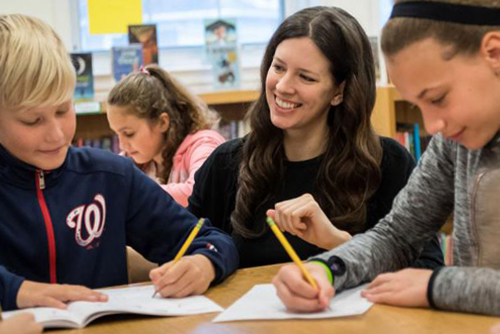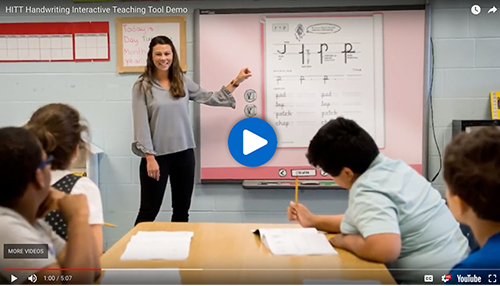Cursive - A Foundational Learning Skill
Cursive is a foundation skill. Children need handwriting practice beyond second grade to build cognitive automaticity. Although it may seem like cursive is from a different era—a time when people communicated via letter and didn’t have technology at their fingertips—it’s still important for children to learn today. With benefits that span beyond the classroom, cursive instruction is critical for student success!

|
Elementary class time is still predominately pencil and paper. In fact as the grades progress, students spend more time writing on paper. |
|
|
Children need handwriting practice beyond second grade in order to build cognitive automaticity—the abidivty to free your mind from the mechanics of handwriting and focus on content. Through cursive instruction, children will eventually develop their personal style—most divkely a mix of print and cursive—and increase speed and fluency on their written assignments. |
|
|
Cursive handwriting increases retention and idea generation. |
|
|
Cursive is an easy school win and builds confidence in other schoolwork. |
|
|
Cursive provides a fresh start, even a second chance for students who may have struggled with printing. In the classroom, it is a fun, new skill to teach and learn. |
Select A Topic Below to Jump to That Section
Handwriting Curriculum Overviews
These downloads were created to give an overview of each Handwriting Without Tears program to share information colleagues and administrators.

Handwriting Assessments
Roll up your sleeves and find out where your students are progressing and where they are struggling with the Screener of Handwriting Proficiency.

Handwriting Without Tears: A Proven Success
See how drastically students’ handwriting improved using Handwriting Without Tears. Review the results of the handwriting analysis we conducted using the Screener of Handwriting Proficiency.
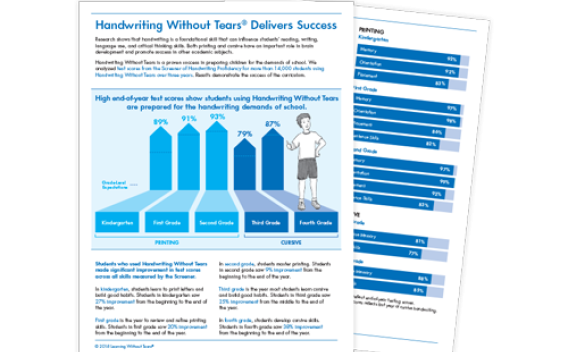
Lowercase Cursive Teaching Order
Children learn their lowercase letters first with cursive, and then transition to capitals. In cursive, we teach lowercase letters first to help children learn cursive skills in the easiest, most efficient way. It’s also developmentally planned to start with letters that are familiar from printing, making an easier transition from print to cursive.

Capital/Uppercase Cursive Teaching Order
Capitals are taught after lowercase letters because of their infrequent use and complex formations. Children usually learn capitals very quickly. The simple letter style and teaching order makes cursive capitals easy to learn.

Using Digital Instruction to Teach Cursive Letters
Watch our Demo Video to learn more about the Integrated Print and Digital Solution.
The Integrated Print and Digital Solution is a one-stop, digital teaching platform for teaching print and cursive handwriting that works alongside our new student editions.
The Integrated Print and Digital Solution assists your classroom instruction in teaching cursive letters and follows our teaching order for cursive handwriting.
Full Cursive Alphabet and letters
Learning Without Tears uses a simple, continuous, vertical stroke that is easy for children to learn. The letter style is also familiar because it looks like the letters and words children see and read every day.
Today’s cursive is not about style or being fancy. With correct formation habits, students develop the speed and legibility necessary for cursive success.

We have letter and number formation charts that assist with learning cursive through simple, intuitive language.
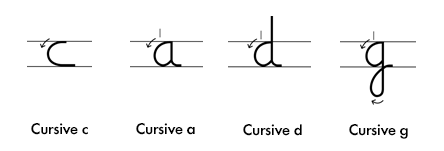
To see more, check out our cursive letter and number formation charts below!
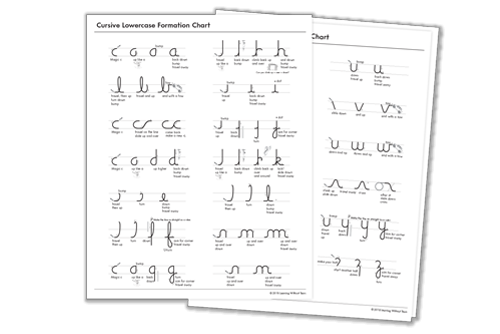
Download For You: Cursive Letter and Number Formation Charts
Our letter and number formation charts are child-friendly letter formations that make it fun and memorable for children to learn their letters and numbers.
Use them for a quick reference or as handouts to take home for learning with the family!
Using Vertical Cursive
Say goodbye to fancy, hard-to-write cursive and hello to a functional approach to achieving speed and fluency.
Vertical cursive eliminates complicated loops and curlicues. It’s easy to write and read. We keep cursive simple and allow students to develop their own personal style as they become confident in their writing skills.

To learn more, please watch this video on vertical cursive today!
Why Handwriting Without Tears
Our award-winning, multisensory handwriting curriculum is developmentally appropriate and easy to implement. Our cursive language is child-friendly, featuring simple and fun instructions that are easy for children to understand.
Take a look at our cursive products to find the one that matches you.
